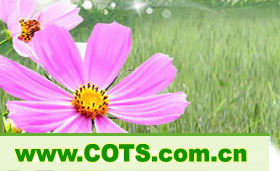Set foot on the Silk Road (1) - Silk Road and the beautiful ranch
I like history, a child against the "Silk Road" and "Western" story had a strong interest, especially for handheld § Han Zhang Qian bull by the horns section of the second mission to the Western Regions, the Western Regions battlefield Banchao Toubicongrong expeditions make great achievements in the story is memorable.
"Silk Road" was named in 1877 the German geographer Ferdinand von Richthofen in his book "China" a book first proposed, and was later generally accepted. It mainly refers to the passing of Central Asia, connecting east and west road access. Because this place from east to west via transportation of commodities, produced in China's soft and elegant, gorgeous color and luster of silk to the West has left a deep impression, the ancient Greeks even called China a "silk." Richthofen with the "Silk Road" to refer to this ancient channel across Asia and Europe and it is vivid.
After the Han dynasty, "Silk Road" on the commercial trade and transport Chronicles Xiangyan unabated, to the Ming Dynasty (1368-1644) open sea before it has been the communication between East and West, the political, economic, and cultural exchanges between the main channel.
Last year, at 9:25 on June 2, I and my colleagues with the tour group from Guangzhou Baiyun International Airport to board a flight to fly to Urumqi and started the "Silk Road" trip.
2 pm, we arrived in Urumqi, capital of Xinjiang Uygur Autonomous Region. Urumqi mountains with water, the vast fertile fields, is well-known Western Regions, "cultivation chisel chord chant of production, song and dance tour Ye land." Therefore, the traditional homelands of the people here, her affectionately known as the Urumqi, Junggar Mongolian meaning " beautiful pasture, "is the ancient" Silk Road "of the north road. Due to the time still early, we arrived in Urumqi and visited the City Museum and the city. City Museum displays relics of Xinjiang (including the mummified, swords, tools, etc.), all ethnic groups in the history of the statue as well as the introduction of Xinjiang. Urumqi, architecture and the city's buildings in northern China is similar to the difference is that a few more round the roof of the mosque. Because here, little pollution, urban areas, especially suburban river clear bottomed out, the water is flowing down from the Tianshan Mountains, and see the long and almost invisible in the southern city of squelch the flow of the river, really want to get off into the river to wash脸.
At 9 pm, in the southern city, is Wanjiadenghuo, but in Urumqi (including the northwest region) also like Guangdong, 6 pm, the sky, day or Liangtang Tang, and no night feeling. Here a family to go to work 9:30 to go to work off duty at 8 pm. In Urumqi Han Chinese live in about 90%, and other ethnic minorities accounting for about 10%.
In urban areas, I think, more interesting places is one called "Red Mountain," the hill, top of the hill there is a tower and two pavilions, mountain side, like Daoxue red cliffs, the other side is a verdant trees, gentle slopes, forming a great contrast.
Urumqi, color, flavor and taste of roasted sheep. 20:00 We have a restaurant has spent 1,200 yuan a point of a roast lamb. Chef dressed in white cap introduced a dining car of coke yellow lamb grilled in front of the guests face an existence of discrete separated from skin. Maybe not so late to eat, smell the fragrant roast lamb, which goes straight to our saliva pharynx, not wait on the tear film immediately from the lamb and mutton into his mouth. Night stay in a friendly hotel.
Author: zzy988



